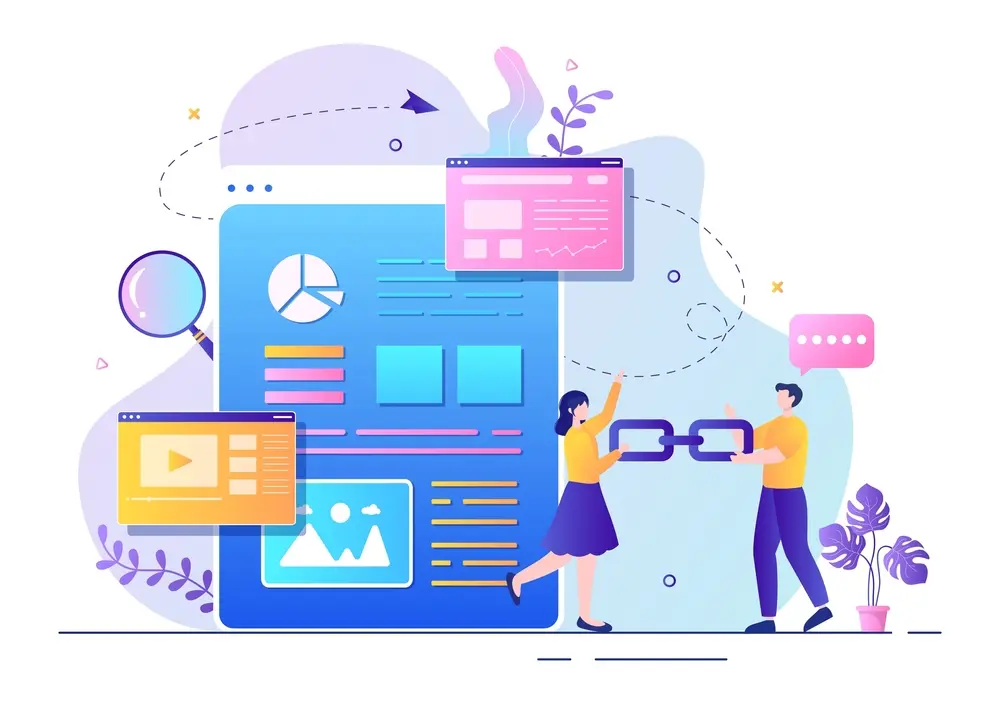When it comes to SEO, external links often steal the spotlight. But internal linking, the practice of hyperlinking one page of your website to another page on the same site, is equally vital. Internal linking not only helps search engines understand the structure of your website but also enhances user experience by guiding visitors to relevant content.
Internal linking involves creating hyperlinks that connect different pages within the same domain. These links are crucial for establishing site architecture and spreading link equity (ranking power) across various pages on your site.

Internal linking plays a pivotal role in SEO. It helps search engines discover and index new pages, understand the hierarchy and relationship between different pages, and distribute page authority more evenly across the site.
Contextual Links: These are links within the content of your pages. They are usually embedded in the text and are relevant to the content surrounding them, providing additional value to the reader.
Navigational Links: These links are typically found in menus and sidebars. They help users navigate through the site and find key sections easily.
Footer Links: Placed at the bottom of the page, footer links often include links to important but less prominent pages like privacy policy, terms of service, and contact information.
Image Links: These are images that serve as links. Clicking on the image takes the user to another page on the site, often used for banners and promotional content.
Improved Site Navigation: Internal links make it easier for visitors to navigate your website, helping them find the information they’re looking for quickly and efficiently.
Enhanced User Experience: By guiding users to related content, internal links keep them engaged and on your site longer, reducing bounce rates and increasing the likelihood of conversions.
Increased Page Authority and Ranking: Internal links distribute link equity throughout your site, helping to boost the authority of your pages and improve their rankings in search engine results.
Better Indexing by Search Engines: Internal links help search engines crawl your site more effectively, ensuring that all pages get indexed and appear in search results.
Identifying Key Pages: Determine which pages on your site are the most important and ensure they receive plenty of internal links. These are often pages that generate the most traffic or conversions.
Using Relevant Anchor Text: The clickable text in a hyperlink, known as anchor text, should be relevant to the linked page and include keywords that you want the page to rank for.
Maintaining a Balanced Link Structure: Avoid concentrating too many links on a single page. Distribute links evenly across your site to ensure all pages benefit from link equity.
Regularly Updating Links: Periodically review and update your internal links to ensure they are still relevant and working correctly. Remove any broken links and add new ones as necessary.
Linking to High-Value Pages: Prioritize linking to pages that offer significant value to users, such as comprehensive guides, product pages, or cornerstone content.
Avoiding Over-Optimization: While it's important to use relevant keywords in your anchor text, avoid keyword stuffing as it can appear spammy and harm your SEO efforts.
Keeping User Experience in Mind: Always prioritize the user experience. Internal links should be naturally integrated into the content and genuinely useful to readers.
Utilizing Deep Links: Link to pages deep within your site’s structure, not just the homepage or top-level pages. This helps spread link equity and increases the visibility of all your content.
Using Generic Anchor Text: Avoid using generic terms like "click here" or "read more" for your anchor text. Instead, use descriptive and relevant keywords.
Creating Orphan Pages: Ensure that all pages on your site are connected through internal links. Orphan pages, which have no links pointing to them, are hard for search engines and users to find.
Ignoring Broken Links: Regularly check for and fix broken links. They not only disrupt the user experience but also hinder search engines from properly crawling your site.
Overloading with Internal Links: Too many internal links can overwhelm users and dilute the value of each link. Aim for a balanced and strategic approach.
Internal linking is a powerful yet often underutilized SEO strategy. By implementing an effective internal linking plan, you can improve site navigation, enhance user experience, and boost your website’s search engine rankings. Remember to use relevant anchor text, avoid common mistakes, and regularly update your links to maintain their effectiveness.
There is no hard and fast rule, but a good practice is to include enough internal links to provide value without overwhelming the user. Aim for 3-5 internal links per page, depending on the content length.
Yes, overloading a page with too many internal links can dilute the value of each link and confuse users. It's important to maintain a balanced and strategic approach.
Regularly review and update your internal links at least every few months to ensure they are still relevant and functioning correctly. Remove any broken links and add new ones as necessary.
An orphan page is a page on your website that has no internal links pointing to it. These pages are difficult for search engines and users to find, which can negatively impact their SEO performance.
Yes, using relevant keywords in your anchor text helps search engines understand the context of the linked page. However, avoid over-optimization by keyword stuffing, as this can appear spammy.